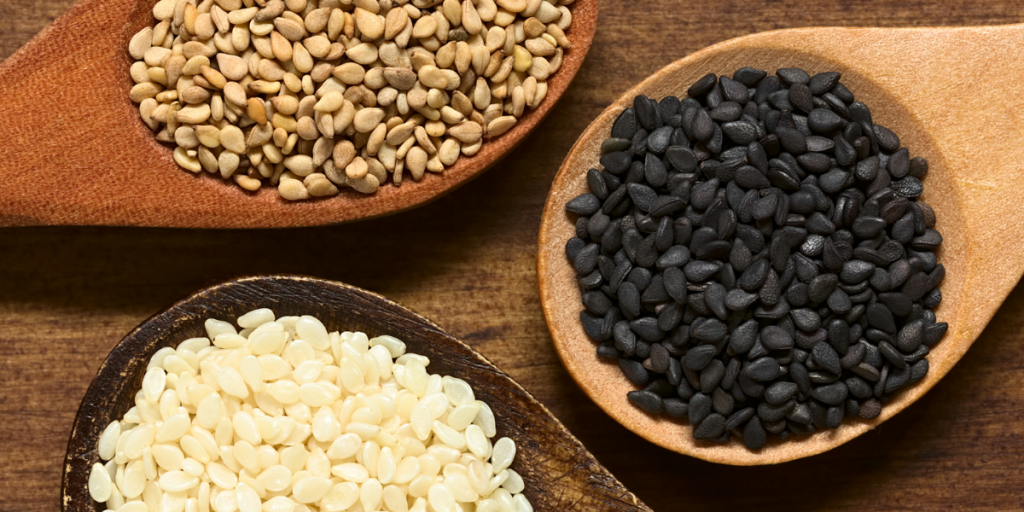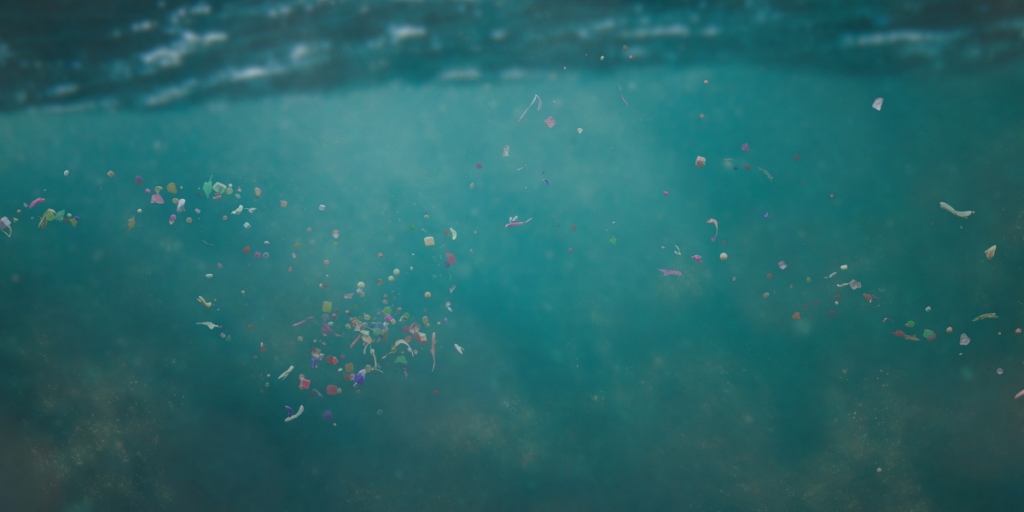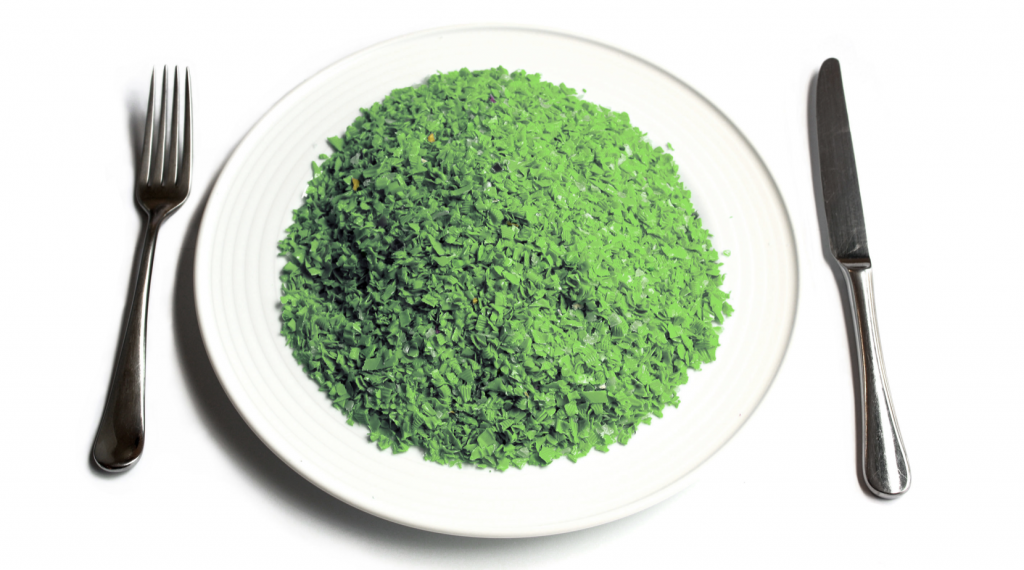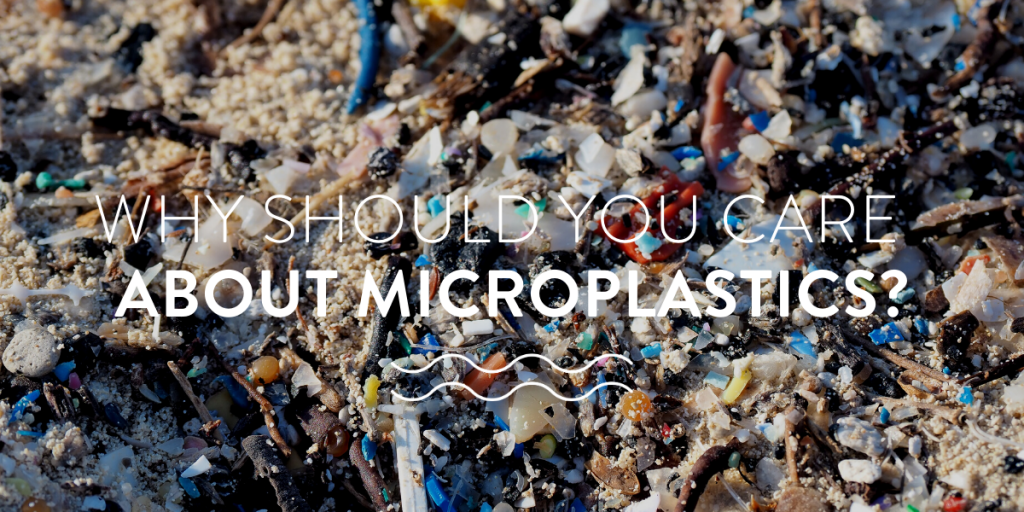Microplastics are any plastic that is less than 5mm in size. So, about the size of a sesame seed or smaller.

Microplastics can be split into 2 categories:
Primary microplastics are those that are manufactured to be less than 5mm, sometimes for use in cosmetics or as nurdles that will be melted down to make larger plastic products. This category also includes microfibres from clothes and car waste e.g. small plastics shed from tyres while driving, as these are already micro when entering the environment.
Read – The Hurdle of the Nurdles & The Problem with Microfibres

Secondary microplastics are formed when larger plastics breakdown in the environment. This happens over time as the plastic is exposed to heat, sun and other factors that degrade the plastic and cause it to breakup into smaller pieces.

Now, why care about Microplastics?
They are everywhere!
Under the sea, on the land, in the rain and even in the air we breathe. Basically everywhere scientists have looked for microplastic they have found it (in human poo too)!
They are killing wildlife
Sure we’ve all heard about marine animals dying with bellies full of plastic, with one whale washing ashore with nearly 100kg of fishing nets and other large plastic items in its stomach.
The size of the plastic and its impact is all relative to the size of the animals, makes sense right!? It has been confirmed that for seabirds microplastic can have the same devastating effects.
“For seabirds, we have these pieces smaller than 5mm getting stuck in the gut and causing death. And all the very big pieces will break up into smaller ones.”
Lauren Roman, CSIRO oceans and atmosphere
They are toxic.
The harmful chemicals used in plastic production (e.g. dyes) can leach out as it breaks down. This could either be directly into animals bodies if they have ingested plastic or out into the environment. Harmful chemicals can also build up on the surface of microplastics (e.g. heavy metals or pesticides). Both the chemicals leaching from and those clinging to microplastics can be ingested and rise through food webs as those chemical-laden animals are eaten by others. This can lead to bioaccumulation of dangerous compounds in predators at the top of the food chain (thats us folks!).
Humans are ingesting them.
We are doing this at quite a large rate, with unknown consequences. As well as in the fish we eat and the water we drink, microplastics have now been found in fruit and veg too. It’s also in meat and dairy via the water and the food farm animals consume.
Plastic bottles of water are particularly concerning given its very nature, with a person who drank only bottled water consuming 130,000 particles per year compared with 4,000 from tap water.
As we said before, it really is everywhere!

At the moment the exact impact of ingesting plastic (whether through food and drink or through inhaling air particles) is unclear. However, there is evidence of its negative impact in other animals, so it definitely requires more investigation and provides yet another reason to lower our plastic usage.
Basically we don’t exactly know what impact the plastic in our bodies is having, but overwhelmingly we still buy into plastic as a product – kind of scary when you think about it!


